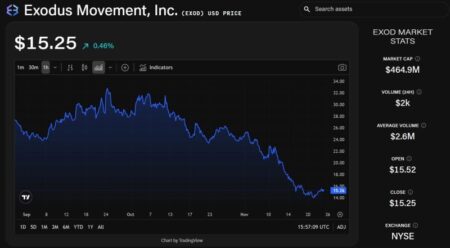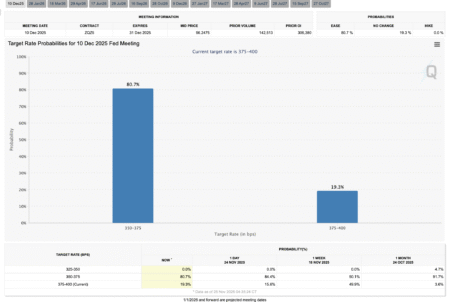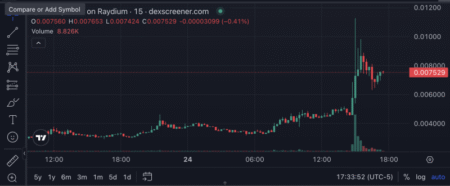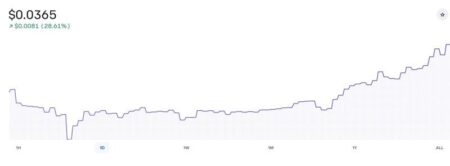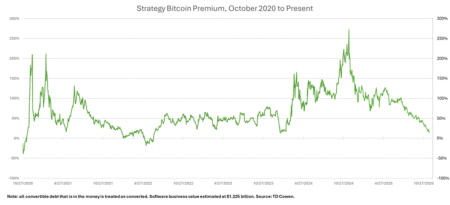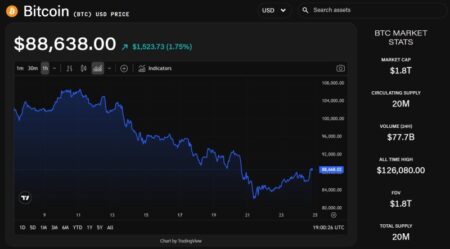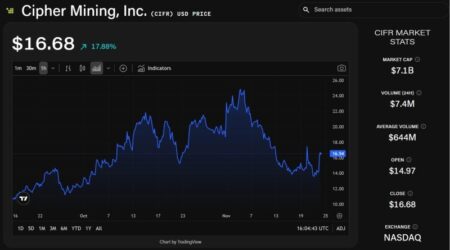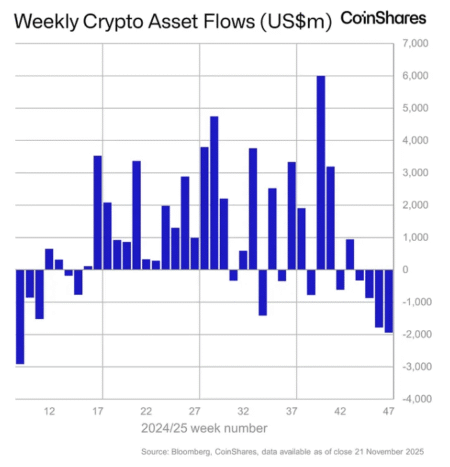Title: The Cryptocurrency Market Faces Historic Decline Amid Political Tensions
Introduction to the Current Crypto Landscape
The cryptocurrency market experienced a significant downturn recently, plunging by 7.37% to a valuation of $2.84 trillion, marking its sharpest single-day decline in months. As of 10:52 a.m. Eastern Time on Tuesday, all non-stablecoin assets among the top 45 cryptocurrencies by market capitalization were adversely affected. This sudden drop has raised concerns among investors and analysts alike, primarily driven by fears surrounding President Donald Trump’s tariff policies and their implications on the broader economy.
Causes Behind the Market Plunge
The primary catalyst for the cryptocurrency market’s decline appears to be the heightened anxiety related to Trump’s tariff policies, which have created uncertainty for both traditional and digital currencies. Investors often react swiftly to geopolitical developments, and the potential for increased trade tensions has spurred a sell-off across various altcoins. This pullback highlights the cryptocurrency market’s susceptibility to external factors, mirroring trends seen in traditional financial markets when political climates become unstable.
Impact on Altcoins and Investor Sentiment
The recent downturn is particularly notable given its breadth, as every non-stablecoin digital asset in the top tier of cryptocurrencies experienced declines. This widespread decrease indicates a collective loss of investor confidence, prompting many to reassess their portfolios in light of the emerging geopolitical risks. The sell-off reflects a cautious sentiment among traders, as the fear of further declines prompts many to liquidate their positions rather than risk even greater losses in an already volatile market.
Historical Context of Market Dips
Historically, the cryptocurrency market has seen a number of notable declines, often associated with market corrections or external economic pressures. However, the recent 7.37% drop stands out as the worst single-day decline in 2025. Investors must consider these patterns as they attempt to navigate the complexities of investing in digital currencies. Such downturns not only prompt discussions about the inherent volatility of cryptocurrencies but also highlight the challenges posed by regulatory uncertainties and economic shifts.
Strategies for Navigating Market Volatility
Given the unpredictable nature of the cryptocurrency landscape, investors are urged to adopt strategies that can help mitigate potential risks. One such approach is to diversify portfolios to include a mix of established cryptocurrencies, as well as emerging altcoins, to spread risk. Additionally, maintaining a long-term investment perspective can help traders weather short-term fluctuations without succumbing to panic selling. Furthermore, staying informed about market trends and political developments can empower investors to make more informed decisions despite external pressures.
Conclusion: The Future of Cryptocurrency Amid Political Uncertainty
As the cryptocurrency market grapples with the aftermath of this significant decline, the future remains uncertain. Political factors, such as tariff policies and economic shifts, will likely continue to influence market dynamics. Investors need to remain vigilant and adapt to changing conditions to navigate this volatile landscape effectively. By understanding the interplay between political developments and market behavior, participants in the cryptocurrency space can better position themselves for long-term success, regardless of short-term market fluctuations.








